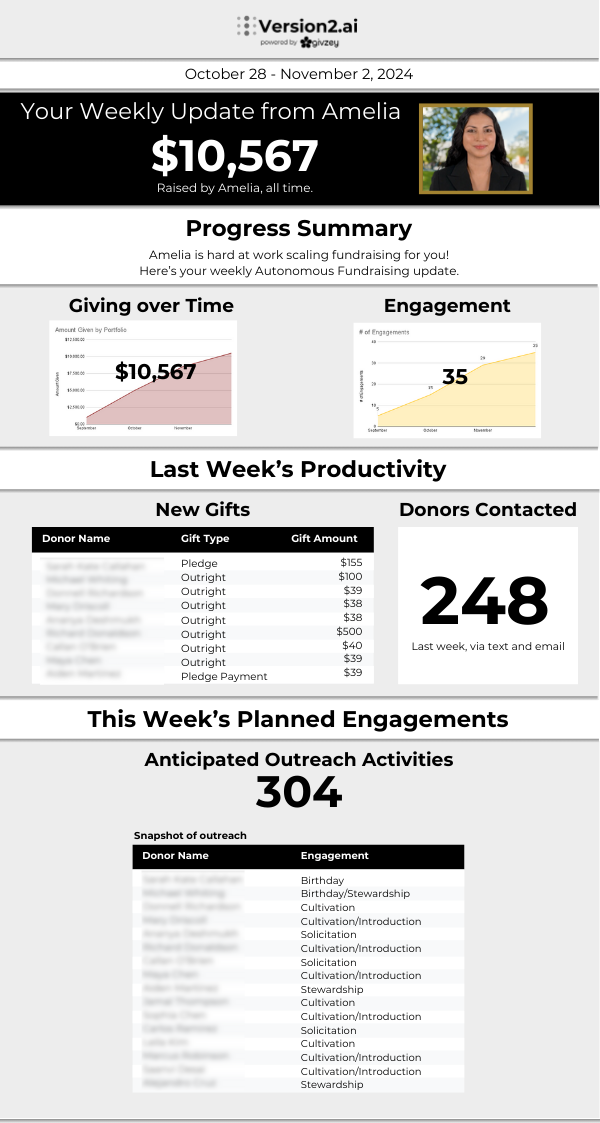Successful fundraising teams are built on a foundation of open communication and accountability between managers and their gift officers. Managers require regular updates and real-time insights from their teams to effectively guide strategy and prioritize outreach. A gift officer updates a manager on progress of a gift in the pipeline. A manager asks the team to shift focus to meet a new fundraising goal, or pivot to a high-priority initiative. This 2-way collaboration allows fundraising teams to be responsive and agile. In every interaction, leadership’s insights shape and drive the team’s success.

Over the last few weeks, our team began dissecting the human manager-gift officer relationship and applying it for the first time ever to Autonomous Fundraising. To be an effective member of the fundraising team, a Virtual Engagement Officer (VEO) will need to be able to communicate and adapt based on its interactions with its manager. The VEO should be able to pivot on the fly, instantly access crucial metrics like real-time giving and engagement numbers, and prioritize outreach to supporters in specific locations, especially in time-sensitive situations.
As a result of our research and the developments that came thanks to the collaborative insights of our Innovation Partners, the VEO sent its first weekly productivity report to its manager last week, offering a proactive summary of metrics like new gifts, donor engagement levels, and even a preview of planned activities for the week ahead.
Regular reporting like this will provide VEOs’ managers with greater knowledge and transparency than ever before possible, and it will empower them to strategically deploy their autonomous fundraisers to the appropriate priorities.
Situational responsiveness of an autonomous fundraiser will be a critical part of this relationship. Just as managers in an office environment reprioritize their team’s tasks to reflect emerging needs, the VEO will be pausing routine activities to follow urgent directions. For example, if a major event with the organization’s president requires additional attendees from the New York City area, the manager redirects VEO to prioritize invitations to donors in that region. Or, in the wake of a regional crisis, the VEO needs to be re-tasked to communicate with donors from affected areas, ensuring that outreach remains relevant and compassionate.
Our close work with our Innovation Partner cohort has fueled these developments. Their daily insights, real-world scenarios, and analytical feedback continue to shape and enhance the VEO’s capabilities. The path forward is about evolving Autonomous Fundraising to ensure it genuinely fulfills real-world frontline fundraising needs.
The VEO has the potential to become the world’s most experienced fundraiser. That extends to both donor interactions and collaboration with managers. We have an opportunity to build VEOs that not only engage seamlessly but are also effortless to manage.
.png)